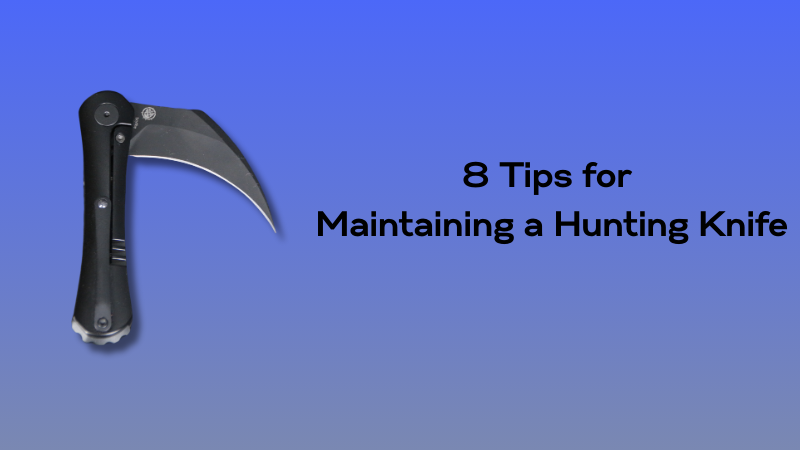
7 Types of Outdoor and Indoor Knives to Consider
 Knives
are essential tools we use daily, playing a key role in a variety of tasks,
from cutting and peeling to protection. Given the wide range of uses, it’s
important to understand the different types of knives available, as selecting
the right one ensures efficiency in whatever you need to do.
Knives
are essential tools we use daily, playing a key role in a variety of tasks,
from cutting and peeling to protection. Given the wide range of uses, it’s
important to understand the different types of knives available, as selecting
the right one ensures efficiency in whatever you need to do.
When
shopping for knives, it’s crucial to consider two main categories: outdoor knives and
indoor knives. Each category is designed to meet specific needs, which we’ll
explore here.
Outdoor Knives

For
activities such as hunting, camping, and fishing, the right knife is essential.
Here are some types of outdoor knives that can make these activities easier and
more enjoyable:
1. Survival Knives
Survival
knives are critical tools when venturing into the wild. Designed for toughness,
these knives feature fixed blades (usually between 4 to 6 inches long) to
handle a variety of tasks like cutting wood, skinning animals, or creating
traps. Since they are not foldable, survival knives are often paired with
holsters for easy access. Their durability and versatility make them a top
choice for wilderness adventures.
2. Pocket Knives
For
everyday carry, pocket
knives are compact, foldable, and incredibly convenient. They’re ideal for
a wide range of small tasks, offering flexibility and portability. When
selecting a pocket knife, it’s important to consider features such as the
locking mechanism to ensure safety and reliability during use.
3. Multi-Tool Knives
Multi-tool
knives combine a blade with additional tools like corkscrews, screwdrivers, and
can openers. These knives offer versatility, making them invaluable during
projects that require more than just cutting. However, the blade may not be as
robust as that of a standard pocket knife, so keep that in mind when choosing
one.
4. Hunting Knives
Hunting
knives are fixed-blade knives built for precision. Their unique shape—typically
a straight edge that curves into a fine point—makes them perfect for skinning
animals and cutting meat. Although they excel in these tasks, hunting knives
aren’t the best option for utility work, as they lack the versatility of
serrated blades.
5. Throwing Knives
Mainly
used for recreational purposes, throwing knives are designed for fun outdoor
activities, like target practice. They’re lightweight and feature a balanced
design to make throwing easy and effective. Made from stainless steel, these
knives are durable and designed to withstand impact without breaking.
6. Fillet Knives
Fillet
knives are indispensable for fishing trips. These fixed-blade knives have long,
flexible blades (ranging from 4 to 9 inches) that make them ideal for delicate
tasks like skinning fish. The blade's flexibility and sharpness are key for
precise, smooth cuts. Choose the blade size depending on the type of fish
you'll be filleting.
7. Tactical Knives
Tactical
knives are designed for self-defense and survival situations. With both fixed
and folding blade options available, they offer durability and strength. In
addition to being reliable for protection, tactical knives can also serve other
purposes, like cutting wood or rope.
Indoor Knives

Indoor
knives are primarily used in the kitchen, where they help with food
preparation. Unlike outdoor knives, which have a more general purpose, indoor
knives are specialized for specific tasks. Here are some of the essential
knives for indoor use:
1. Chef’s Knives
A
chef's knife is the cornerstone of any kitchen. With a broad, curved blade,
this knife is ideal for chopping, slicing, and dicing. The design allows it to
rock back and forth on a cutting board, making food prep much easier.
2. Utility Knives
Smaller
and slimmer than a chef’s knife, utility knives provide precision when you need
finer cuts. They’re perfect for cutting smaller foods or when the chef’s knife
feels too large for the task.
3. Bread Knives
With
their serrated edge, bread knives are specially designed for slicing bread
without crushing it. The long, sharp blade allows for a smooth, sawing motion
that works through soft textures like bread or cakes.
4. Carving Knives
Carving
knives feature a long, narrow blade that’s perfect for slicing through meat.
Whether you're carving a roast or cutting a turkey, the design of this knife
makes the process smooth and precise.
5. Butcher Knives
Known
for their heavy, broad blades, butcher knives are made for breaking down large
cuts of meat. Their sturdy design allows for efficient chopping and cutting,
making them essential in a professional kitchen.
Conclusion

The variety of knives available can be overwhelming, but understanding the purpose of each type helps make your choice easier. Whether you're looking for an outdoor knife for adventure or an indoor knife for cooking, knowing your needs will guide you to the right tool. Explore your options carefully, and invest in the best knives that match your specific tasks.
